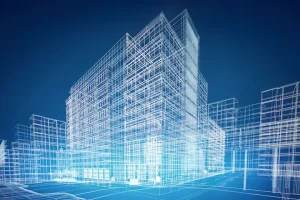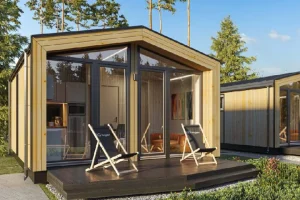Smart homes have become an integral part of modern life thanks to the advancement of Internet of Things (IoT) and automation technologies. These homes, using advanced equipment, allow for remote control and management of various departments such as lighting, security, heating and cooling, audio and video systems, and even irrigation. Using these technologies not only increases security and comfort, but also helps optimize energy consumption and reduce costs. Today and in this article, we are going to introduce smart home equipment from 0 to 100. So don’t miss this article and follow us until the end.
What is a smart home?
Smart Home is a set of technologies and automated systems that allow for remote and intelligent control and management of various home equipment. In a smart home, devices such as lighting systems, thermostats, door locks, security cameras, electric curtains and home appliances are connected to a central network and controlled via the Internet or local networks. This control can be done through mobile applications, voice assistants such as Alexa and Google Assistant, or scheduled programs. The main goal of smart homes is to increase comfort, security, energy efficiency and reduce consumption costs. For example, smart lighting systems and thermostats automatically adjust based on the presence of people in the house, creating the most optimal conditions and preventing energy waste.
A smart home usually works on the basis of various communication technologies such as Wi-Fi, Bluetooth, Zigbee or Z-Wave, which allow for the coordination and integration of various devices. One of the most important advantages of a smart home is its higher security. Smart security systems allow for live viewing of cameras, remote control of door locks and receiving instant alerts if suspicious movement is detected. In addition, home automation allows users to set specific scenarios to perform various operations. For example, when leaving the house, all the lights are turned off, the ambient temperature is lowered and the security system is activated. Overall, smart homes not only make life more convenient, but also save time and energy and improve the safety of the living environment.
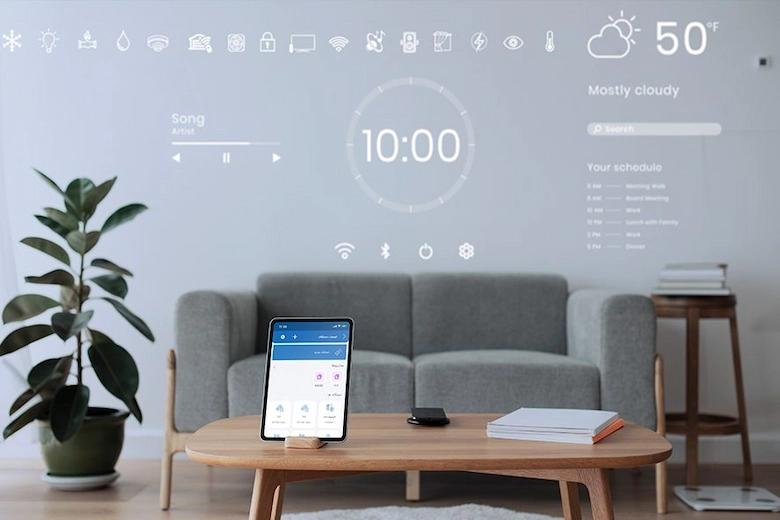
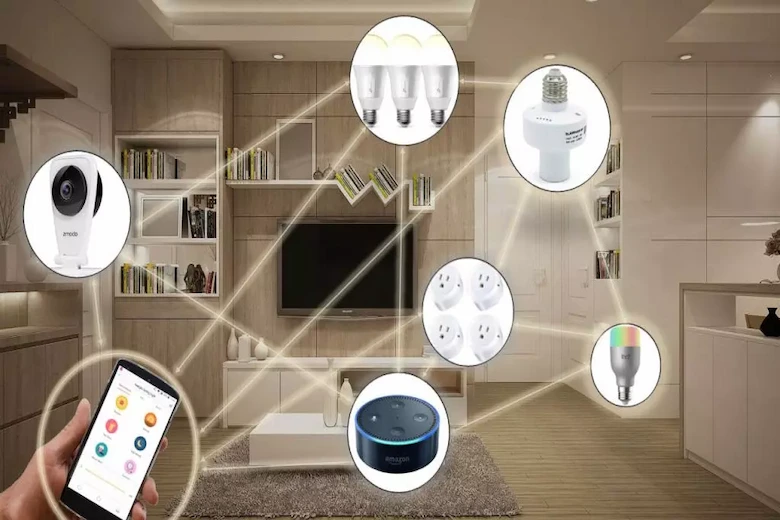
Smart home equipment list
A smart home is a collection of advanced devices that allow you to control and automate various parts of your home. These devices include lighting, heating and cooling, security, audio and video systems, electric blinds, and many more. Below, we will review the most important smart home devices. Stay tuned.
1. Smart lighting system
Smart lighting systems include bulbs, switches, and sensors that allow you to control your home’s lighting through mobile apps or voice commands. These systems allow users to adjust the intensity of the light, change its color, or automate the lighting in your home based on pre-set scenarios. For example, lights can turn on when people enter a room and turn off when they leave. In addition, using smart lighting in smart home devices reduces energy consumption and extends the life of bulbs.
2. Smart thermostat and air conditioning system
Smart thermostats play an important role in controlling home temperature and optimizing energy consumption among smart home devices. These devices can adjust the ambient temperature based on the habits of residents and reduce energy consumption during non-essential hours. Some models are equipped with presence detection sensors and can adjust the temperature automatically. Also, users can remotely manage the heating and cooling systems of the home via smartphones and set the appropriate temperature before entering.
3. Smart door locks
Smart locks replace traditional locks and increase the security of home entrances. These locks allow you to open and close the door via password, fingerprint, RFID card or even a mobile app. Some models have the ability to send notifications when people enter or leave and can create timed access for specific people. Also, in the event of an unauthorized attempt to open the door, an alert message is sent to the homeowner. The set of these features has led us to include these elements in the list of smart home equipment.
4. Smart security and surveillance cameras
Smart cameras allow users to view and record live video from their home. These cameras come with features such as night vision, motion detection, smart alerts, and cloud video storage. Some models use artificial intelligence technology to recognize faces and identify authorized people. These cameras also offer two-way audio communication, which is useful for monitoring children and pets.
5. Motion sensors and presence detection
Motion sensors are installed in various parts of the home and detect people entering and leaving, and are considered an important element in smart home equipment. These sensors can be used alongside security systems to detect suspicious movements or in lighting systems to automatically turn lights on and off. Also, when combined with smart thermostats, occupancy sensors can reduce energy consumption, because if there are no people in the room, the heating or cooling system will automatically turn off.
6. Smart electric curtains and blinds
But another smart home accessory is smart curtains and blinds. Smart curtains and blinds allow users to control their opening and closing remotely or automate them according to a schedule. For example, curtains can automatically open at sunrise and close at night. This feature not only provides greater comfort, but also helps regulate the indoor temperature of the home and reduce energy consumption.
7. Smart audio and video system
Smart audio and video systems include wireless speakers, home theaters, smart TVs, and other connected smart home devices that allow for remote control and automation of home entertainment. These systems are typically controlled through voice assistants like Alexa or Google Assistant and can integrate seamlessly with other smart home devices. For example, the system can dim the ambient light and close the curtains when you’re watching a movie.
8. Smart irrigation system
Smart irrigation systems are used to control water consumption in the green space of the house. These systems can irrigate plants based on weather conditions, soil moisture, and specific schedules. In addition to saving water, using these systems helps plants grow better and prevents them from drying out when the homeowner is not present.
9. Smart voice assistants
Voice assistants like Amazon Alexa, Google Home, and Apple Siri are an important part of smart home devices. These devices allow users to control various home devices using voice commands. For example, you can control the lighting system by simply saying “turn off the lights” or adjust the thermostat by saying “lower the temperature in the room.” These devices can also answer questions, play music, and set reminders.
10. Smart fire and gas leak alarm systems
Smart smoke and gas detection systems are among the most critical pieces of smart home equipment. These systems quickly send out alerts and can even automatically activate the ventilation system if they detect smoke, carbon monoxide, or hazardous gases. Some models send notifications to a mobile phone, allowing the homeowner to be notified of an incident and take necessary action even when they are not home.
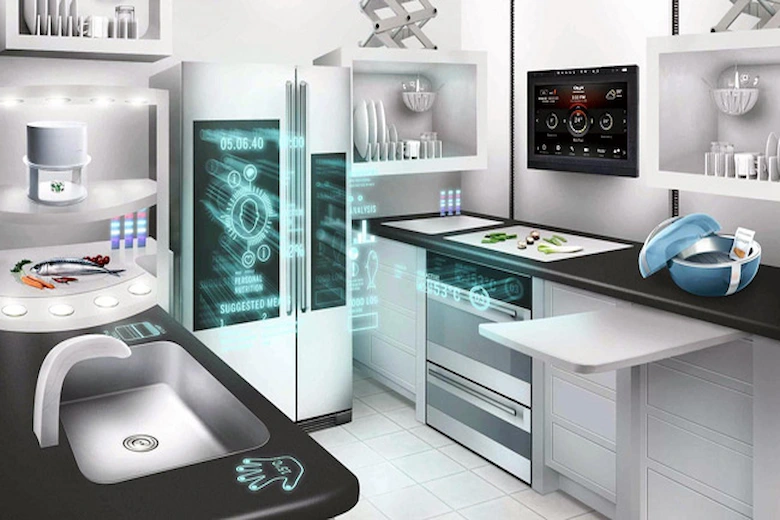
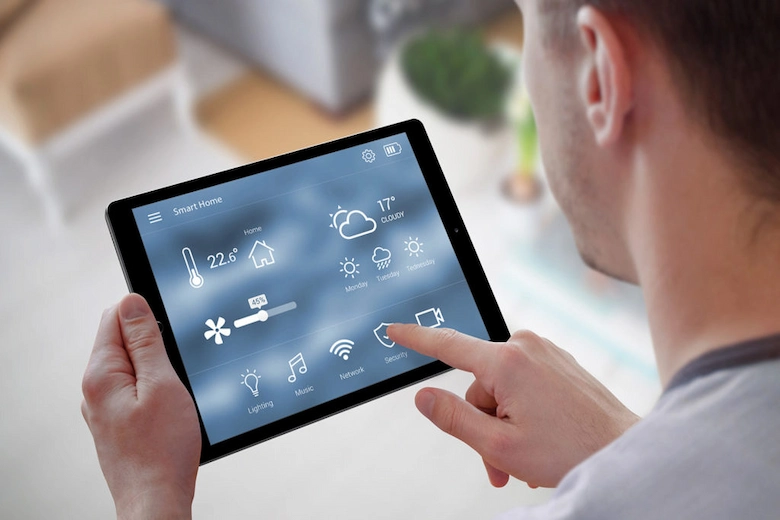
Benefits of using smart home equipment
1. Increase home security and protection
One of the most important benefits of smart home devices is their high security. Smart security devices such as CCTV cameras, digital locks, motion sensors and gas and smoke alarm systems allow for constant monitoring and protection of the home. These devices connect to the smartphone via the Internet and send instant alert messages in the event of any threat. For example, if suspicious movement is detected around the home, the alarm system is activated and allows for live viewing of images via mobile. These features minimize theft and accidents and give homeowners more peace of mind.
2. Save energy and reduce costs
Smart homes use energy management systems to reduce electricity, water, and gas consumption, thereby reducing monthly costs. Smart home devices such as automatic thermostats, smart LED bulbs, and smart irrigation systems adjust energy consumption based on the actual needs of the home. For example, smart thermostats can adjust the temperature of the home based on the presence or absence of residents, preventing energy waste. Smart lights can also reduce electricity consumption by automatically adjusting based on ambient light and daily activities. These features not only help reduce household costs, but also reduce environmental impacts.
3. Convenience and remote control
One of the most attractive features of smart home devices is the ability to remotely control all home appliances. Using special applications or voice assistants such as Google Assistant and Amazon Alexa, users can manage their devices from anywhere. For example, they can adjust the room temperature, open or close the curtains, or activate the security system before arriving home. This level of control increases convenience and saves time. In addition, smart automation scenarios allow users to perform various operations without the need for manual intervention. For example, when leaving the house, all the lights are turned off and the door locks are automatically activated.
4. Increasing property value and attractiveness to buyers
Properties equipped with smart home equipment are more attractive to buyers and investors. Smart properties are usually offered at a higher price in the market, as their modern equipment and advanced facilities increase the quality of life of the residents. Many buyers are looking for homes that are equipped with advanced security systems, intelligent energy management and remote control. Moreover, considering the growing trend of technology and the increasing demand for smart homes, investing in this area can have a good return in the long run. Therefore, adding smart equipment to the home not only provides more comfort, but also increases the value of the property.
5. Improving the quality of life and creating a modern and enjoyable experience
Smart home devices provide a modern and convenient experience for residents by providing advanced features. From adjusting lighting and music to suit users’ moods to automating everyday activities, all of these capabilities make life more enjoyable. For example, smart audio and video systems allow for automatic adjustment of sound and image based on environmental conditions, creating a cinematic experience at home. Also, elder and child care systems enable better and more convenient monitoring for families. All of these features make living in a smart home not only more convenient, but also more efficient and exciting.
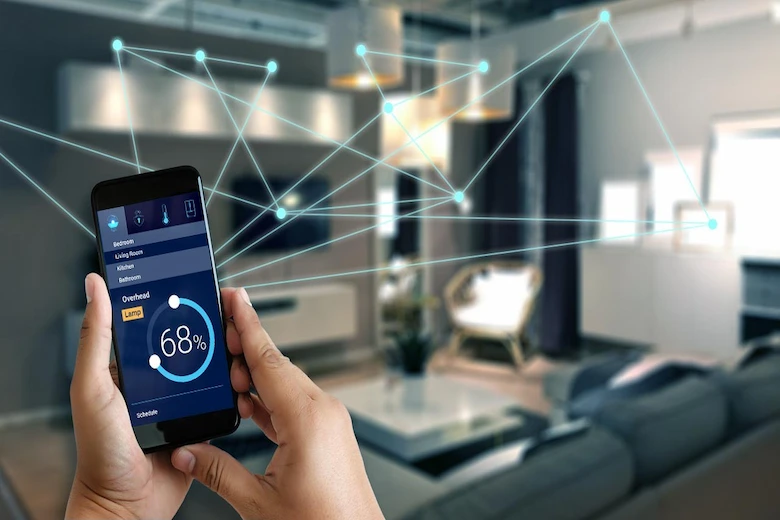
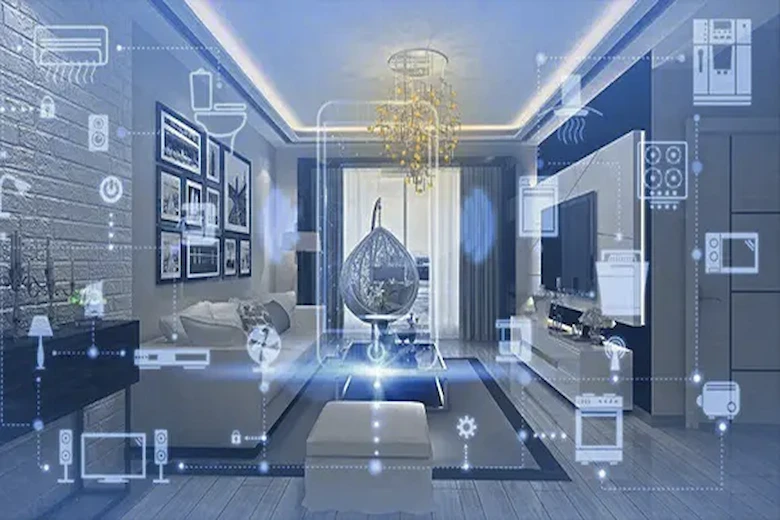
Final Words
As you can see, in this article, we have thoroughly introduced and reviewed smart home equipment. We learned that smart homes make life easier, safer, and more efficient by providing advanced and intelligent features. Using modern equipment such as lighting systems, digital locks, smart thermostats, and surveillance cameras gives users more control and allows them to manage their home from anywhere. In addition, reducing energy consumption and increasing property value are other benefits of this technology. Given the rapid pace of technological advancement, a future in which all homes are equipped with smart systems is not far off. Therefore, investing in these technologies is not only a smart choice, but also a necessity for modern life. Thank you for following us until the end of this article.
Ohaddeco Group specializes in the design and implementation of various LSF structure, various KIT HOUSE structures, and interior coatings such as wooden acoustic wall covering and wooden thermowall. Dear friends, you can contact our experts for more information and free consultation.

